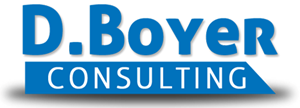Business is mostly conducted via email or phone communications.
Office hours 10:00 a.m. to 6:00 p.m, Mon. - Thurs., and 10:00 a.m. to 2:00 p.m. on Fridays.
SEND EMAIL INQUIRIES DIRECTLY TO:
Dawn.Boyer@me.com
Business is mostly conducted via email or phone communications.
Office hours 10:00 a.m. to 6:00 p.m, Mon. - Thurs., and 10:00 a.m. to 2:00 p.m. on Fridays.
SEND EMAIL INQUIRIES DIRECTLY TO:
Dawn.Boyer@me.com
Business is mostly conducted via email or phone communications.
Office hours 10:00 a.m. to 6:00 p.m, Mon. - Thurs., and 10:00 a.m. to 2:00 p.m. on Fridays.
SEND EMAIL INQUIRIES DIRECTLY TO:
Dawn.Boyer@me.com
Career advice on resume content per degrees and certifications.
June 9th, 2020 by Dawn Boyer
An interesting question was posited on LinkedIn, which prompted varied responses from recruiters, other job seekers, and hiring managers. The question was asked by a high-level management executive who was interested in what would be prudent in listing the ‘alphabet soup’ of certifications he had achieved in his career. As a human resources professional who has done industry recruiting, this prompted an automatic cringe. Many job seekers are so interested in telling their entire story on a resume, there is no wiggle room to tease or incite the curiosity of the recruiters or hiring manager. Job seekers also may not understand the software capability of the automated tracking system (ATS) for the resume databases used by the professional placement specialists.
Here is a few tips to keep in mind when writing one’s resume to avoid over-pretentiousness or driving away recruiters’ interest in qualifications and skill sets.
- In some industries, degree titles are important – science, teachers, and specialized consultants. While the Japanese feel it is insulting to list their formal education degrees on their business cards, in America, the PhD after the job seeker’s name notes qualification for higher education institution teaching or administration or science-based companies (e.g., Pharmaceutical, Research & Development).
- If one is an engineer, the P.E. is vital to show vital certifications for the industry.
- If the job seeker is not seeking a job in engineering or higher education, then the advice would be – don’t add all the training certification initials after the resume owner’s name. These educational and training qualifications should be listed at the end of the resume. Formal education lists completed degrees. The training and certification section lists non-degree certifications, training classes, or seminars one has attended, in process, or completed.
- It is perfectly acceptable to list a degree or training in progress. List dates as MM/YY – present, and at the end of the bullet, note ‘expected completion: MM/YY.’ If training was started, but stopped, list a terminal date of the last training session (MM/YY – MM/YY). If one does not list dates, the implication is the degree or training is completed, thus can be interpreted in audits as fibbing and may provide companies a reason to terminate employment.
Certifications don’t guarantee a job seeker has experience. The better practice is to add those certifications – including years of experience – to a qualifications section underneath the job title and/or objective. For example:
- XX years, Program Manager (PMP Certified)
- XX years, Project Manager (SCRUM Certified; Manufacturing Industry)
Another reason to keep a resume name section clean is many ATS resume database systems will convert document (.doc or .pdf) files to text to reduce server storage space. This makes it easier for a query engine. Initials will be parsed into the “Jr.”, “Sr.”, “Ph.D.”, or “P.E.” suffix text box. If too many acronyms, the parsing machine may get confused and move extra text into an address or an email box, thus the email may be deleted or moved to a non-relevant box. When recruiters are ready to send out mass-emails for a job announcement, the system may see an invalid email. The result is the job seeker won’t get the announcement for a job opening.
Another point to ponder is the recruiters’ favorite (but illegal) note that a candidate is ‘overqualified’ for a position when they see a higher or terminal degree. For a high-level management position in business, a Masters in Business Administration (MBA) is preferred. If one has a Doctorate in Business Administration (DBA), the recruiter is likely to note ‘over-qualified” or find a reason to not consider the candidate because they may be asking for too much in compensation based on the degree achievement. If one is not in a scientific fields or in the university industry, leave off acronyms and elaborate on terminal degrees in an education section to avoid ‘first impression overkill.’
On another note, some job seekers add acronyms after their names that may never be asked about. One story is a very successful businessman wrote “MM” after his name for over a decade. At a party, someone was finally curious enough to ask what the acronym meant. He replied, “Mover of Mountains.” And, in all those years, no one had ever asked!
Readers Comments
Career advice on resume content per degrees and certifications.
June 9th, 2020 by Dawn Boyer
An interesting question was posited on LinkedIn, which prompted varied responses from recruiters, other job seekers, and hiring managers. The question was asked by a high-level management executive who was interested in what would be prudent in listing the ‘alphabet soup’ of certifications he had achieved in his career. As a human resources professional who has done industry recruiting, this prompted an automatic cringe. Many job seekers are so interested in telling their entire story on a resume, there is no wiggle room to tease or incite the curiosity of the recruiters or hiring manager. Job seekers also may not understand the software capability of the automated tracking system (ATS) for the resume databases used by the professional placement specialists.
Here is a few tips to keep in mind when writing one’s resume to avoid over-pretentiousness or driving away recruiters’ interest in qualifications and skill sets.
- In some industries, degree titles are important – science, teachers, and specialized consultants. While the Japanese feel it is insulting to list their formal education degrees on their business cards, in America, the PhD after the job seeker’s name notes qualification for higher education institution teaching or administration or science-based companies (e.g., Pharmaceutical, Research & Development).
- If one is an engineer, the P.E. is vital to show vital certifications for the industry.
- If the job seeker is not seeking a job in engineering or higher education, then the advice would be – don’t add all the training certification initials after the resume owner’s name. These educational and training qualifications should be listed at the end of the resume. Formal education lists completed degrees. The training and certification section lists non-degree certifications, training classes, or seminars one has attended, in process, or completed.
- It is perfectly acceptable to list a degree or training in progress. List dates as MM/YY – present, and at the end of the bullet, note ‘expected completion: MM/YY.’ If training was started, but stopped, list a terminal date of the last training session (MM/YY – MM/YY). If one does not list dates, the implication is the degree or training is completed, thus can be interpreted in audits as fibbing and may provide companies a reason to terminate employment.
Certifications don’t guarantee a job seeker has experience. The better practice is to add those certifications – including years of experience – to a qualifications section underneath the job title and/or objective. For example:
- XX years, Program Manager (PMP Certified)
- XX years, Project Manager (SCRUM Certified; Manufacturing Industry)
Another reason to keep a resume name section clean is many ATS resume database systems will convert document (.doc or .pdf) files to text to reduce server storage space. This makes it easier for a query engine. Initials will be parsed into the “Jr.”, “Sr.”, “Ph.D.”, or “P.E.” suffix text box. If too many acronyms, the parsing machine may get confused and move extra text into an address or an email box, thus the email may be deleted or moved to a non-relevant box. When recruiters are ready to send out mass-emails for a job announcement, the system may see an invalid email. The result is the job seeker won’t get the announcement for a job opening.
Another point to ponder is the recruiters’ favorite (but illegal) note that a candidate is ‘overqualified’ for a position when they see a higher or terminal degree. For a high-level management position in business, a Masters in Business Administration (MBA) is preferred. If one has a Doctorate in Business Administration (DBA), the recruiter is likely to note ‘over-qualified” or find a reason to not consider the candidate because they may be asking for too much in compensation based on the degree achievement. If one is not in a scientific fields or in the university industry, leave off acronyms and elaborate on terminal degrees in an education section to avoid ‘first impression overkill.’
On another note, some job seekers add acronyms after their names that may never be asked about. One story is a very successful businessman wrote “MM” after his name for over a decade. At a party, someone was finally curious enough to ask what the acronym meant. He replied, “Mover of Mountains.” And, in all those years, no one had ever asked!









